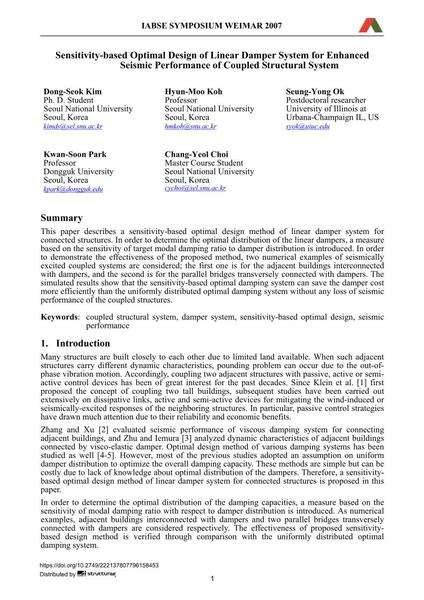Sensitivity-based Optimal Design of Linear Damper System for Enhanced Seismic Performance of Coupled Structural System

|
|
|||||||||||
Bibliographic Details
| Author(s): |
Dong-Seok Kim
Hyun-Moo Koh Seung-Yong Ok Kwan-Soon Park Chang-Yeol Choi |
||||
|---|---|---|---|---|---|
| Medium: | conference paper | ||||
| Language(s): | English | ||||
| Conference: | IABSE Symposium: Improving Infrastructure Worldwide, Weimar, Germany, 19-21 September 2007 | ||||
| Published in: | IABSE Symposium Weimar 2007 | ||||
|
|||||
| Page(s): | 408-409 | ||||
| Total no. of pages: | 6 | ||||
| Year: | 2007 | ||||
| DOI: | 10.2749/222137807796158453 | ||||
| Abstract: |
This paper describes a sensitivity-based optimal design method of linear damper system for connected structures. In order to determine the optimal distribution of the linear dampers, a measure based on the sensitivity of target modal damping ratio to damper distribution is introduced. In order to demonstrate the effectiveness of the proposed method, two numerical examples of seismically excited coupled systems are considered; the first one is for the adjacent buildings interconnected with dampers, and the second is for the parallel bridges transversely connected with dampers. The simulated results show that the sensitivity-based optimal damping system can save the damper cost more efficiently than the uniformly distributed optimal damping system without any loss of seismic performance of the coupled structures. |
||||
| Keywords: |
seismic performance coupled structural system damper system sensitivity-based optimal design
|
||||
